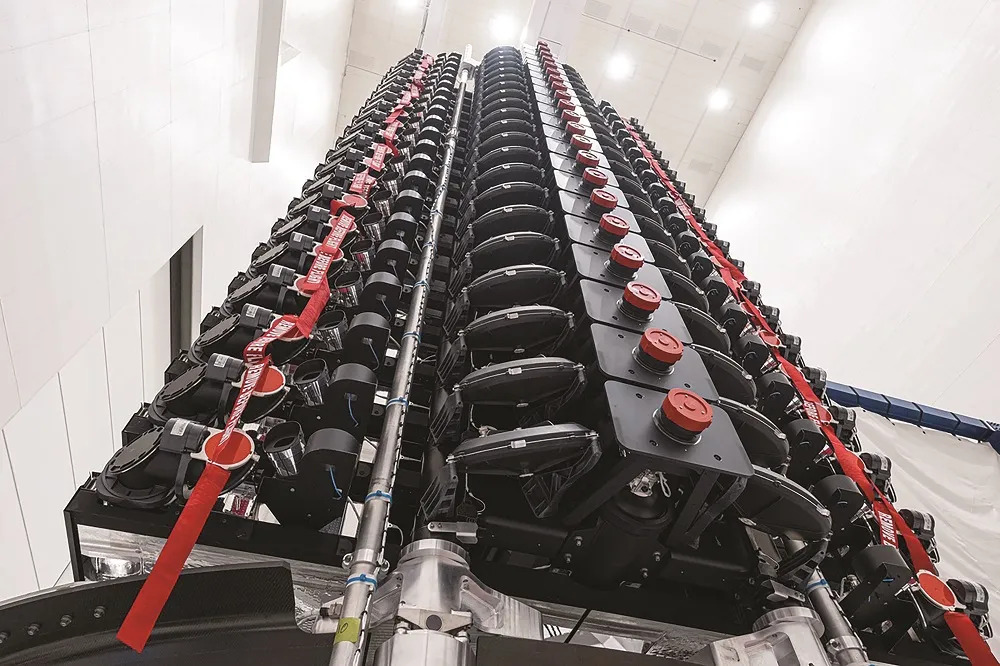
SpaceX has received permission to use the E-band to strengthen Starlink communications
The Federal Communications Commission (FCC) has authorized SpaceX to use E-band frequencies between Starlink’s second-generation satellites and ground gateways, along with the already approved Ka and Ku bands. In particular, SpaceX is now allowed to communicate at 71-76 GHz from space to Earth and at 81-86 GHz from Earth to space, using up to 7,500 Starlink Gen2 satellites that the company is allowed to deploy, SpaceNews reports. SpaceX claims that the use of E-band will quadruple the capacity of these satellites.
SpaceX plans to launch 30,000 Gen2 satellites in addition to the 4,400 Gen1 satellites already approved by the FCC. In December 2022, the regulator granted SpaceX permission to launch 7,500 second-generation satellites, and postponed the decision on the rest. The Commission also postponed its decision on SpaceX’s plans to use E-band frequencies, citing the need to establish general rules for the use of these frequencies in space.
In a regulatory document dated March 8, the FCC stated that SpaceX’s proposed E-band operations would not create new or exacerbate existing conflicts with other satellite operations. But the document contains many conditions. Thus, if another satellite operator also tries to use E-band radio waves, SpaceX will have to modify its operations.
Starlink satellites use Ku-band to connect user terminals. In October, the FCC also authorized SpaceX to provide fixed satellite services using V-band on Gen2 satellites. The V-band, like the E-band, is a high-frequency band and is still in its infancy.
SpaceX reported that the use of E-band radio waves in Starlink Gen2 will significantly improve communication compared to previous versions, as higher-frequency spectrum bands promise greater bandwidth. It was stated that the bandwidth would increase by about four times.
According to Jonathan McDowell, a spacecraft observation specialist and astrophysicist, there are about 1,900 Starlink satellites in orbit under the Gen2 license. About two-thirds of these satellites are much larger and more powerful than Gen1, but smaller than the full-scale versions intended for launch on the new generation Starship spacecraft, which is just being tested. About 3,600 satellites in orbit are classified as Gen1.
The FCC continues to postpone its decision on whether to allow SpaceX to deploy the remaining 22,500 satellites in the proposed second-generation constellation.

